What's New
Displaying results 3361 - 3370 of 4052
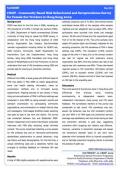
Resource | Fact Sheets,
CRiSP was done for the first time in 2006, revealing an HIV prevalence of 0.19% in female sex workers (FSW). In 2009, Department of Health commissioned Chinese University of Hong Kong to repeat the CRiSP survey, in collaboration with the Hong Kong Coalition of AIDS Service Organization Sex Industry Sub-Committee member organizations including Action for REACH out, AIDS Concern, Community Health Organization for Intervention, Care and Empowerment, Hong Kong Caritas, Hong Kong AIDS Foundation and Hong Kong Society of Rehabilitation and Crime Prevention. It aims to understand the trend of HIV prevalence among FSW and provide data for planning of prevention activities.

Resource | Publications,
As part of monitoring and evaluation of the Avahan programmes, quantitative Special Behavioural Surveys (SBS) and Integrated Behavioural And Biological Assessment (IBBA) surveys were conducted with FSWs to examine sex work characteristics, condom use and sexual behaviours with regular partners and clients, alcohol and drug use, and knowledge and use of the HIV prevention programme services.
This quantitative Special Behavioural Survey (SBS) study was conducted with female sex workers (FSWs) in urban Bellary district from December 2005 to July 2006.
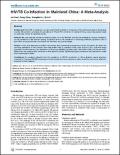
Resource | Publications,
TB and HIV co-epidemic is a major public health problem in many parts of the world, particularly in developing counties. We aimed to summarize the prevalence of TB and HIV co-infection in mainland China, using meta-analysis based on systematic review of published articles.
Our analyses indicated that the prevalence of HIV/TB co-infection in China deserves special attention, screening of TB among HIV/AIDS populations should be attached more importance, which would be much more helpful for treatment of both diseases.
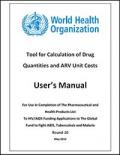
Resource | Tools,
A tool has been developed to support the completion of the WHO work planning and budgeting tool and the Pharmaceutical and Health Products List of the Global Fund proposal (the "Quantities Tool"). Currently this tool is only available for the HIV disease component.
The primary objective of the quantities tool is to assist the user in calculating calculation of antiretroviral (ARV) drug quantities and unit costs. In addition, the quantities tool calculates the average unit cost for treatment per client for first- and second-line therapy for adults and paediatrics.

Resource | Presentations,
This is a presentation on the status of the AIDS Epidemic in Asian countries. This was presented during the International Epidemiological Association Meeting in Colombo last May 24, 2010.
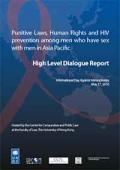
Resource | Publications,
A significant number of men having sex with men in the Asia Pacific region do not have access to HIV prevention and care services as HIV prevalence has reached alarming levels in many countries. If countries fail to address the legal context of the epidemic, this already critical situation is likely to become worse. The implementation of effective, human rights-based national HIV responses requires governments to consider the effect of laws and law enforcement practices on the health of men who have sex with men (MSM) and transgender persons.
The report's findings and follow up discussion showed that 19 of 48 countries in the Asia Pacific region criminalize male to male sex, and these laws often taken on the force of vigilantism, often leading to abuse and human rights violations. Even in the absence of criminalization, other provisions of law often violate the rights of MSM and transgender persons along with arbitrary and inappropriate enforcement, thereby obstructing HIV interventions, advocacy and outreach, and service delivery. This very debate was at the heart of the recent landmark ruling by the Delhi High Court that Section 377 of the Indian Penal Code unfairly discriminates against men who have sex with men and consenting adults in general.
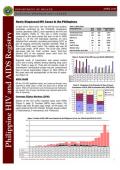
Resource | Fact Sheets,
In April 2010, there were 154 new HIV Ab seropositive individuals confirmed by the STD/AIDS Cooperative Central Laboratory (SACCL) and reported to the HIV and AIDS Registry (Table 1). This was a 133% increase compared to the same period last year (n=66 in 2009) [Figure 1]. Of the 154 individuals reported, 23 were detected from voluntary counseling and testing (VCT) as part of ongoing community outreach activities.
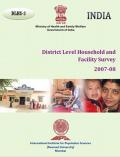
Resource | Publications,
In order to monitor the ongoing health and family welfare programmes, the need for a database at the district level was felt by the Government of India. For this, the District Level Household and Facility Survey (DLHS) was undertaken. The present District Level Household and Facility Survey (DLHS-3) is third in the series preceded by DLHS-1 in 1998-99 and DLHS-2 in 2002-04. DLHS-3 is one of the largest ever demographic and health surveys carried out in India, with a sample size of about seven lakh households covering all districts of the country. DLHS-3, like other two earlier rounds, is designed to provide estimates on maternal and child health, family planning and other reproductive health indicators.
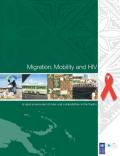
Resource | Publications,
The report provides a rapid assessment of migration and mobility as key influences on the distribution and spread of HIV in the Pacific. While this has been established globally with targeted and tailored prevention programmes on mobility and HIV in a number of countries, the Pacific has yet to develop appropriate responses that take migration and mobility into consideration and ensure that HIV interventions address the drivers of mobility and the specific vulnerabilities that mobility creates. It is expected that this report will contribute to the development of multi-sectoral responses required to address the HIV epidemic in the Pacific region and provide the impetus for the development of effective and targeted interventions for people on the move.
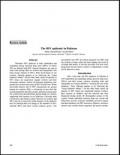
Resource | Publications,
Pakistan's HIV epidemic is fully established and expanding among injection drug users (IDUs) of whom 20% are infected with HIV. Nascent epidemics are seen in some cities among Male sex workers and transgenders who form sexual contacts of IDUs. With involvement of sex workers, Pakistan appears to be following the "Asian Epidemic Model". On the other hand, nearly all patients in HIV clinics are expatriated migrant workers and their immediate relations. Almost all principle population subgroups have at least some cases of HIV in most cities. While universally known risk of HIV transmission are present among sex workers, IDUs, a sub-group of men from the general population and other groups, epidemics among male sex workers have preceded those among female sex workers suggesting local nuances in sex behaviors.





